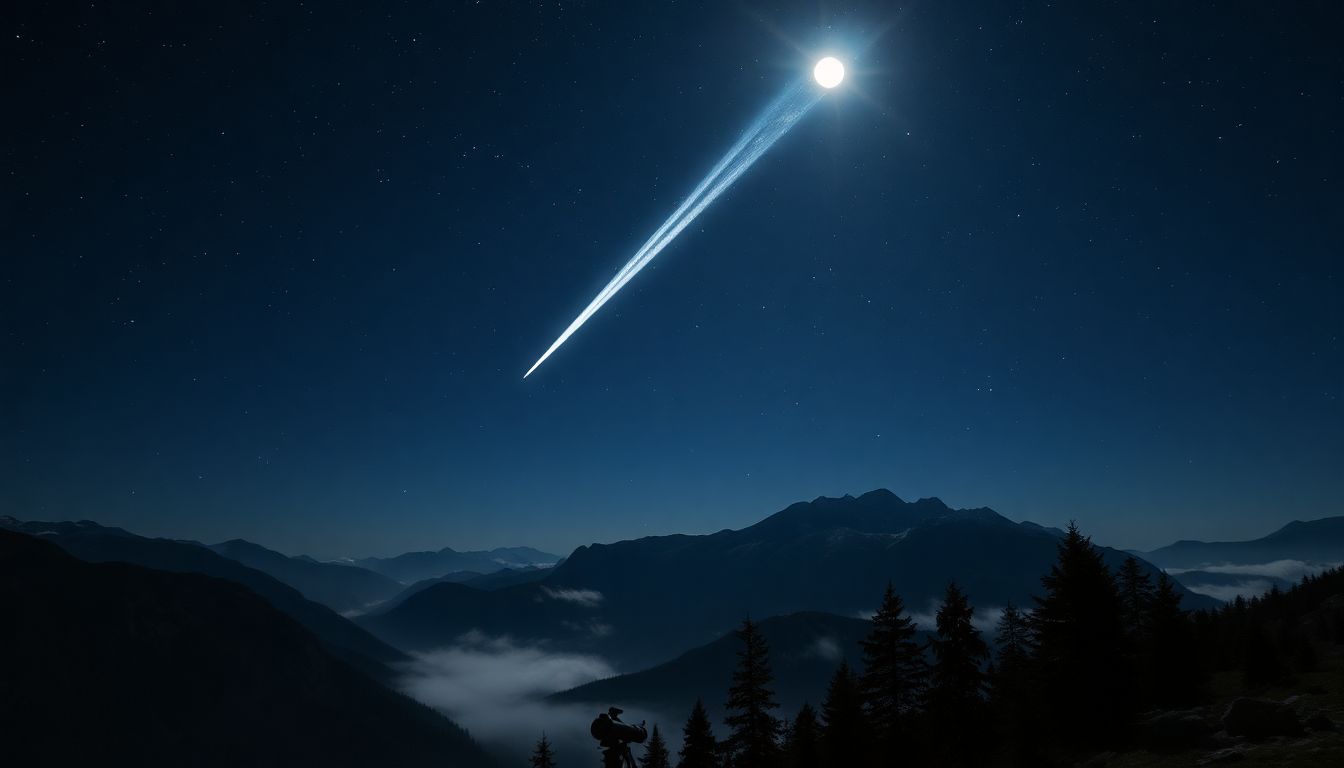
How to Know the Right Time to Spot the Comet This Year
Introduction
Watching a comet light up the night sky is a rare and exciting experience. These icy visitors from space don’t appear every year, and their unpredictability adds to the thrill. Catching sight of a bright comet can turn an ordinary night into a memorable event. But knowing when to look makes all the difference. Spotting a comet at the right moment means better viewing, clearer photos, and the chance to share a once-in-a-lifetime moment. In this guide, we’ll explore the key factors that help you time your comet watch perfectly this year.
Understanding Comets and Their Orbits
What Are Comets?
Comets are icy bodies made of dust, rock, and frozen gases. They come from the outer parts of our solar system. When they swing close to the Sun, they develop a glowing tail that stretches millions of miles. This tail always points away from the Sun. Comets are like cosmic messengers, revealing what the early solar system was made of.
There are two main types of comets:
- Short-period comets: Return regularly, often within 200 years. Halley’s Comet is a famous example.
- Long-period comets: Spend thousands or even millions of years traveling around the Sun. They often appear only once in a lifetime.
How Comets Move and Why It Matters
Comets follow elongated, elliptical paths around the Sun. Their orbits can vary greatly, which affects when they appear in our night sky. As a comet approaches the Sun, it gets brighter and more visible. Moving away, it dims again and disappears from view. Knowing a comet’s orbit helps predict when it will be closest and brightest, so we can plan our viewing times accordingly.
Notable Comets This Year
This year promises some interesting sights. For example, Comet C/2023 A1 is expected to become visible in early months. Space agencies and astronomy websites constantly update these predictions. Checking their latest reports can give you the best idea of when to look. Keep an eye on reputable sources like NASA or the European Space Agency for accurate details on upcoming comets.
Tracking Comet Visibility: Key Factors
Orbital Data and Comet Trajectory
Orbital data tells us where a comet will be in the sky and when. Look for ephemeris reports—charts that show the comet’s position at specific times. Using astronomy software like Stellarium or SkySafari can make this easier. These tools allow you to input your location and see exactly when and where the comet will be visible.
Solar and Lunar Conditions
The Sun’s position influences how much light washes out faint objects. The moon is also a big factor. A full moon can drown out the dim glow of a comet. The best viewing happens during a new moon or when the moon is in a crescent phase. Clear, dark skies free from city lights will make your comet sighting much better. Weather conditions like clouds or fog can spoil the experience, so check the forecast before heading out.
Optimal Viewing Locations
Where you stand matters. Find a spot away from city lights, preferably in a dark-sky park or high-altitude area. Darkness makes faint comets easier to see. Avoid areas with bright artificial lights, tall buildings, or thick trees blocking your view. The higher the elevation, the less atmosphere you have to look through, which can improve clarity.
Timing and Duration
Identify the dates when the comet is closest and brightest. You want to watch during this peak period. The time of night also counts—most comets are easiest to see in the hours before dawn or late at night. Expect visibility windows to last a few days or weeks, so plan to be ready when conditions align.
Tools and Resources to Determine the Right Viewing Time
Using Astronomical Apps and Software
Apps like Stellarium, SkySafari, and Heavens-Above simplify tracking comet paths. They let you set your location and receive alerts for upcoming comet sightings. Many apps even let you simulate sky views to help you plan your night.
Consulting Official Astronomical Calendars
Reliable sources like Sky & Telescope, local observatories, and space agencies provide updated calendars. You can subscribe to alerts and newsletters to stay informed about comet visibility changes and upcoming events.
Local Astronomy Clubs and Observatories
Joining a local club brings expert advice and group viewing events. Clubs often host star parties during major celestial events. These gatherings can turn a solo outing into a fun social experience, with spotters guiding you on the best times and spots.
Expert Tips for a Successful Comet Viewing Experience
Planning Ahead
Prepare your gear—binoculars, telescopes, and cameras—before the big night. Double-check the weather forecast to avoid clouds and rain. Think about lunar phases; a dark sky with little moonlight is best.
Maximizing Visibility
Catch the comet when it’s highest in the sky. Late evening or pre-dawn hours often offer optimal views. Give yourself plenty of time to set up and adapt to the dark. Use red-light flashlights to preserve your night vision while adjusting your equipment.
Safety and Ethical Viewing
Respect nature and nearby residents. Avoid disturbing wildlife or leaving trash behind. Remember, darkness is a gift to night sky lovers—don’t ruin it with unnecessary light or noise. Never stare at the Sun directly, and use proper filters if viewing during twilight.
Conclusion
Knowing when to spot a comet isn’t just guesswork. It depends on understanding their orbits, tracking their paths, and watching for the right sky conditions. Use reliable tools and stay updated with official sources to find the best times for viewing. With a little planning and patience, witnessing a bright comet can become a cherished memory. Keep your eyes on the sky and be ready—you never know when a spectacular visitor will appear overhead.

